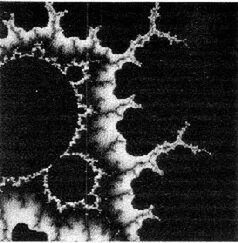10. With these words, Hercules pulled one of his bows (until then Hercules carried two bows). Then, showing how to gird, he handed the bow and belt (a golden bowl hung at the end of the belt fastener) and left. When the children grew up, the mother gave them names. One called Agathyres another Gelon, and the youngest Scythian. Then, remembering the advice of Hercules, she did as Hercules commanded. Two sons – Agafirs and Gelon could not cope with the task, and their mother expelled them from the country. The younger, Skif, managed to complete the task, and he remained in the country. From this Scythian, the son of Hercules, all Scythian kings arose. And in memory of that golden chalice, even to this day, the Scythians wear bowls on their belts (this was only done by the mother for the benefit of Scythian).
11. There is also a third legend (I myself most trust him). It says so. Nomadic Scythian tribes lived in Asia. When the massagets ousted them from there by military force, the Scythians crossed Araks and arrived in Cimmerian land (the country now inhabited by Scythians, from ancient times, belonged to the Cimmerians. With the approach of the Scythians, the Cimmerians began to advise what to do in the face of a large enemy army. And so on The opinions of the council were divided, although both sides stubbornly stood their ground, but the kings’ proposal won. so the people didn’t heed the advice of the kings, and the kings did not want to obey the people. The people decided to leave their homeland and give the invaders their land without a fight; the kings, on the contrary, preferred to lay bones in their native land rather than flee with After all, the kings understood what great happiness they had experienced in their native land and what troubles awaited the exiles, deprived of their homeland. Having made this decision, the Cimmerians divided into two equal parts and began a struggle between themselves. The Cimmerian people buried all those who died in the fratricidal war near the Tiras River (the grave of the kings can still be seen there). After that, the Cimmerians left their land, and the Scythians who came took possession of a deserted country.
12. And now even in the Scythian land there are Cimmerian fortifications and Cimmerian crossings; there is also a region named Cimmeria and the so-called Cimmerian Bosporus. Fleeing from the Scythians to Asia, the Cimmerians occupied the peninsula where the Hellenic city of Sinope is now. It is also known that the Scythians, in pursuit of the Cimmerians, went astray and invaded the land of Media. After all, the Cimmerians constantly moved along the coast of Pontus, while the Scythians kept to the left of the Caucasus during the persecution until they invaded the land of the Medes. So, they turned inland. This last legend is transmitted equally by the Greeks and barbarians. “Herodotus. History. IV.5
Herodotus also recorded legends about the origin of the Scythians. One of them claimed that the Scythians appeared on their land (as its first people) a thousand years before the invasion of Darius (that is, in the middle of the second millennium BC) and were associated with the Dnieper, since their first ancestor Targitai was considered a son Zeus and nymphs – the daughter of Borisfen (Dnieper). Another legend that the Greeks told Herodotus related the origin of the Scythians to the Lower Dnieper, because the first Scythian king was Scythian – the son of Heracles and the virgin Echidna, who lived in Gilea. Both legends are interesting in that the first tells about Scythians-farmers (their symbols were a plow, yoke, ax, bowl), and the second, obviously, about steppe pastoralists (onions are called their symbols,
belt, bowl). To date, the issue of the origin of the Scythians has not been finally resolved. As a rule, referring to the fact that the main complex of the material culture of the Scythians – the Steppes – was foreign to local traditions, the steppe Scythians are considered newcomers. At the same time, the message of Herodotus and Aristeus about the arrival of the Scythians from Asia, from the Far North, is taken into account, for Aristeus, in search of Hyperborea, visited the homeland of Apollo and left evidence about it transmitted by Herodotus, although Herodotus portrays Aristea more as a deity than as a person, looks legendary the death of Aristeus with the disappearance of the body and the clothes left by him, and the fact that Aristeus appeared later, and offered to honor himself as the crow of Apollo.
The main territory of Scythian settlement is the steppes between the lower reaches of the Danube and the Don, including the steppes of the Crimea, the areas adjacent to the Northern Black Sea coast. The northern border is the lands of the Volga region, and in the East are the regions of Altai and Tyva, and there are burial sites of Scythians in Mongolia and the territories of the Far East. (Archaeological works of Herman Pantsiger and Anatoly Nagler in Tyva. The Tunnug mound, which was studied by these scientists, is dated IX millennium BC..n. e., the very beginning of the Scythian time). The Scythians were divided into several large tribes. According to Herodotus, the royal Scythians were dominant – the easternmost of the Scythian tribes, bordering the Savromats along the Don, also occupied the steppe Crimea. Nomadic Scythians lived to the west, and farmers, Scythians-farmers lived to the west of the Dnieper. On the right bank of the Dnieper, in the basin of the Southern Bug, near the city of Olbia, there were callipids, or Hellenic-Scythians, the translation of this term is completely ambiguous and is more connected with religion, north of them – Alazones, and even north – Scythians-Pahari.
Конец ознакомительного фрагмента.
Текст предоставлен ООО «ЛитРес».
Прочитайте эту книгу целиком, на ЛитРес.
Безопасно оплатить книгу можно банковской картой Visa, MasterCard, Maestro, со счета мобильного телефона, с платежного терминала, в салоне МТС или Связной, через PayPal, WebMoney, Яндекс.Деньги, QIWI Кошелек, бонусными картами или другим удобным Вам способом.












